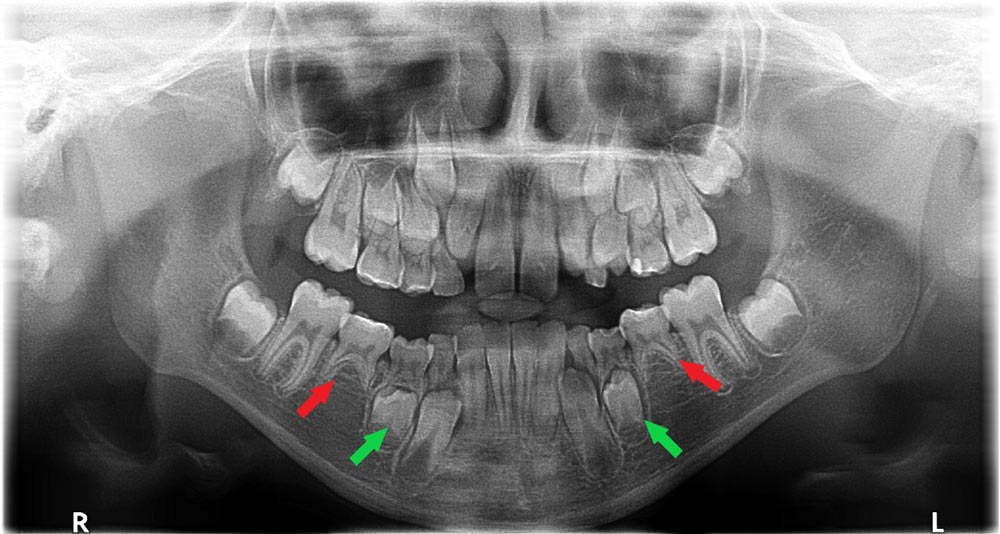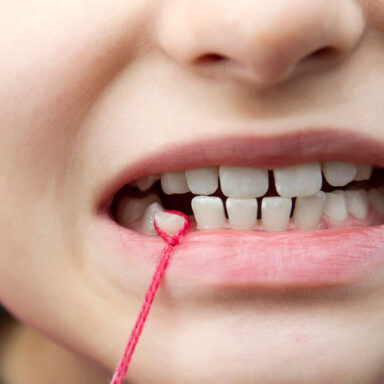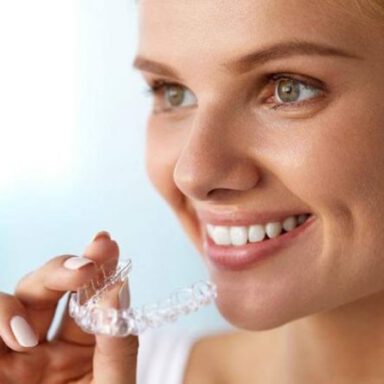Lexicon
Hypodontia

If no new, permanent tooth grows back after the milk teeth have fallen out, this is referred to as a non-attachment. The technical term for this is aplasia. It can affect a single tooth or several. The absence of one or more teeth is also referred to as hypodontia. It is caused by the patient’s genetics. In addition to congenital and hereditary reasons, a non-system can also develop after illness. A delay in development is also possible. This is referred to as late development of the affected tooth. Hypoplasia or a hypoplastic tooth is a precursor to a non-set-up tooth. In the case of hypoplasia, the tooth is present, but its dimensions are significantly smaller than usual.

Author
Dr. Fabian von Rom
Date
Estimated reading time
approx. 2 Min
Hypodontia
Contents
Where tooth non-attachment occurs most frequently
Wisdom teeth are the most frequently unformed teeth. In most cases, wisdom teeth that have not formed have no consequences and do not require treatment. The second most frequently affected tooth is the second small molar (premolar) in the lower jaw. The third most common location for a non-formed tooth is the upper lateral incisor.

Possible treatments for non-systems
There are several treatment options for non-systemic diseases.
- Gap closure in the case of missing teeth: Gap closure is one of the possible treatment approaches for dealing with missing teeth. Here, the orthodontist moves neighboring teeth to the position of the gap created by the missing tooth. The advantage of this treatment method is that the patient does not need artificial dentures. Closing the gap orthodontically solves the problem of malocclusion as early as adolescence – and in the long term.
- Implant in the absence of teeth: As an alternative to orthodontic gap closure, a dental prosthetic approach can be chosen. Instead of using the patient’s own teeth, the gap is closed with a bridge or implant after the loss of the primary tooth.
Your expert for orthodontics
Dr. Fabian von Rom
In the specialist practice for orthodontics, Dr. med, dent. Fabian von Rom uses his extensive expertise and many years of experience to offer patients the best possible care. The practice offers the entire spectrum of modern orthodontics and specializes in innovative and advanced treatment methods. In addition to traditional procedures, the focus is on treatment with invisible braces for teenagers and adults – one of the most modern and discreet solutions in orthodontics. Dr. med. dent. Fabian von Rom attaches great importance to ensuring that medical precision goes hand in hand with a high level of patient satisfaction. By equipping the practice exclusively with individual treatment rooms, individual and professional care at the highest level is guaranteed.

Further topics
In our guide you will find lots more information on current, relevant and interesting topics relating to orthodontics. We hope you enjoy reading it!



